<<<
This week assignement is
"do something big."
Our router is not yet functional, so I choose to create a wavy table, corrugated cardboard, with laser cutting.
I'll take the opportunity to familiarize myself with a tool that I just discovered: Sverchok
I just found a free equivalent grasshoper / rhino: Sverchok (cricket in Ukrainian), a plugin for blender that seems to be very powerful.
So I decided to take advantage of the exercise this week to try to use it.
I am just starting with Sverchok while I explore the resources to try to find how to do what I want.
I explored the soft organic and chaotic way, by trial and error, gradually understanding its logic, and especially thanks to the excellent blog on the subject of blendersushi .
With interface box and cable, which is somewhat reminiscent of pure data , it generates and modifies lists:
- vertices (3D coordinates)
- edges (vertex index couples)
- faces (3 or more vertices index)
- lists of lists (unlimited levels...)
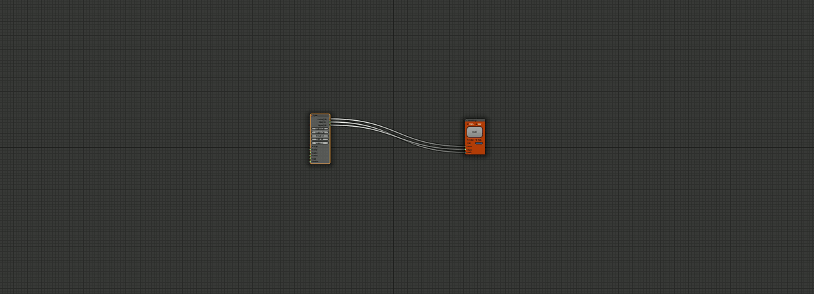 I finally managed to get to what I wanted to achieve: parametric parts to achieve an undulating table.
I finally managed to get to what I wanted to achieve: parametric parts to achieve an undulating table.
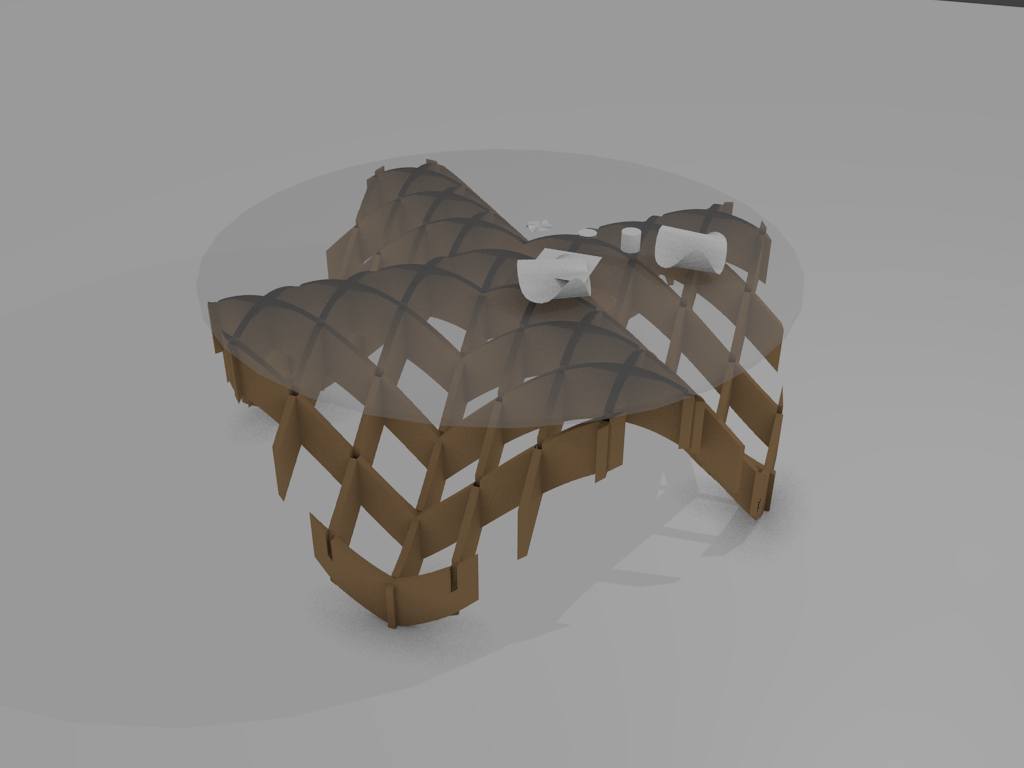
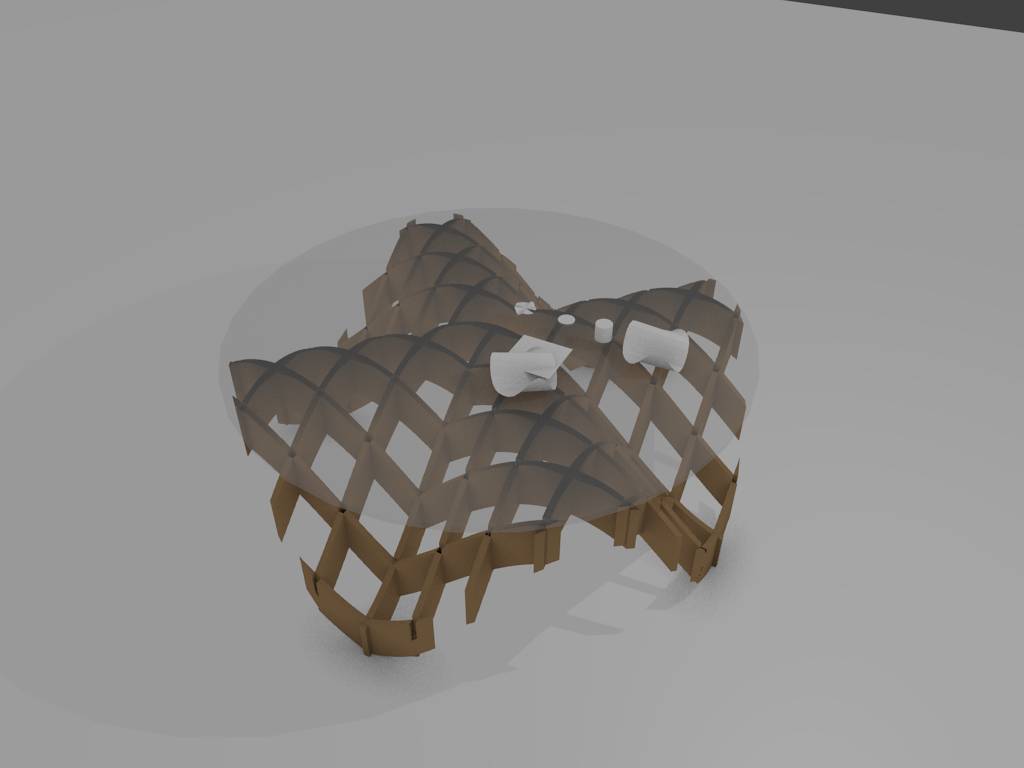
 Sverchok allows me to manage the equation of deformation of plates that make up the table.
File:VagueTable.generator.sverchok.blend
As often happens in this type of learning, I discovered a posteriori much simpler ways to do what I wanted ...
But in any case, I discovered a very fun new tool that opens new horizons for me in terms of modeling meshes.
Sverchok allows me to manage the equation of deformation of plates that make up the table.
File:VagueTable.generator.sverchok.blend
As often happens in this type of learning, I discovered a posteriori much simpler ways to do what I wanted ...
But in any case, I discovered a very fun new tool that opens new horizons for me in terms of modeling meshes.
Before exporting design, I adjusted the notches sizes in function of the material :
I chose to use two cardboard ripple 5.33mm thick
after a test laser cutting, I determined that the size of the slots should be 4.9mm.
The resulting shapes are planes in 3D space, we must now extract to manipulate 2D.
Blender is more suited to produce bitmaps, not accurate enough for a cut on this scale, so I'm looking for solutions to directly export the layouts of objects for use in laser cutting.
Incidentally, I found a plugin to export a mesh in a Developed svg:
perfect for work bending wood! (not for this work but for my final project)
For the need of today, a recent script works fine: SVG output script
This plugin works pretty well, and also offers interesting possibilities in graphic terms ...
It exports Blender camera view vector file in SVG format.
By cons, to properly adjust the scale, I had to do some fine tuning:
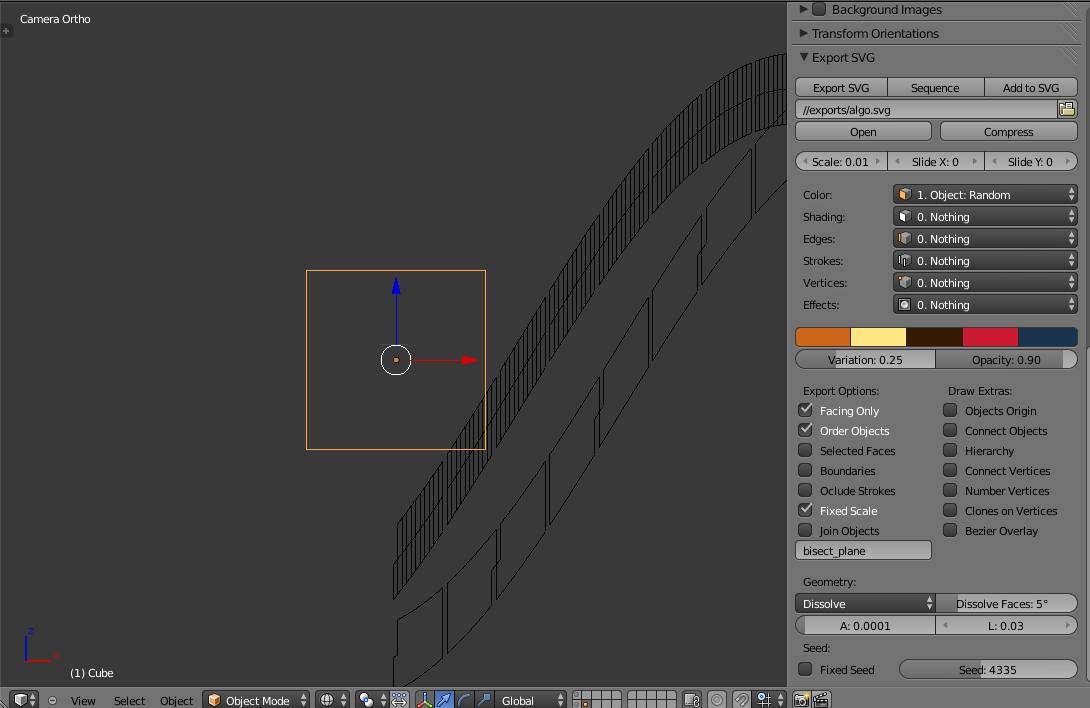 the main ones are:
the main ones are:
- Scale: 0.01
- Shading, Edges, Strokes, Vertices, Effects = Nothing
- Fixed scale: yes
recess, shooting must be done with an orthographic camera (isometric).
in inkscape, I correct scale objects to 354.33%: thus, for a unit in blender, I get a mm in inkscape.
Each object appears in the form of a group containing all facets of the Blender object.
It is then ungroup (ctrl + shift + G) and apply them Boolean union operation (ctrl + +) for the outer path of the object.
Finally, I got the cut file:
 colorful shapes are unique, while the forms in black are out in duplicate.
We see that the equation of my table will deserve to be reworked to be a little more "eco friendly"
I can not really pack shapes to save material, whereas flaring a little wave, he had been possible to bring more and do better "nesting".
colorful shapes are unique, while the forms in black are out in duplicate.
We see that the equation of my table will deserve to be reworked to be a little more "eco friendly"
I can not really pack shapes to save material, whereas flaring a little wave, he had been possible to bring more and do better "nesting".
Laser cutting has not caused too many problems, if not my brain eaten by crickets that does fight all morning with the settings.
(Thank you laurent (s) blows hands!)
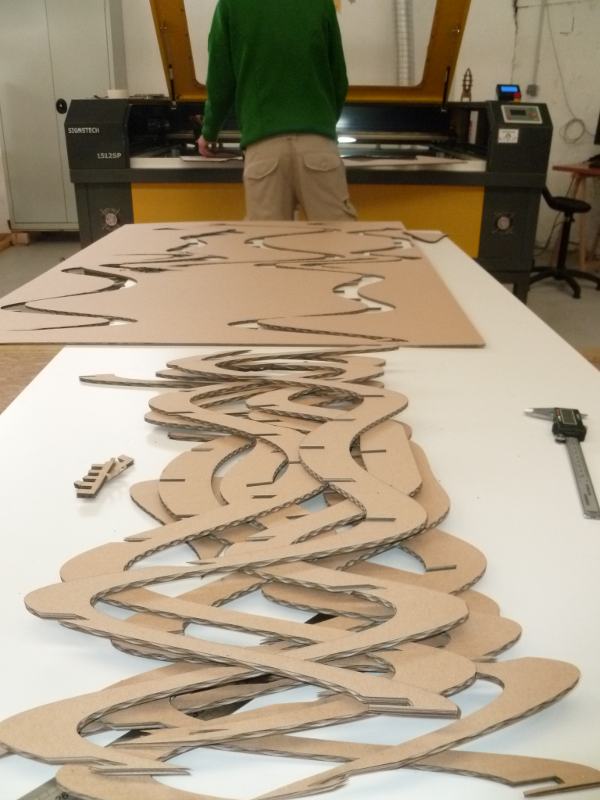 So I got the 20 parts needed to my realization.
So I got the 20 parts needed to my realization.
I realized that this is not so easy to set up a structure of this type, especially if you forget to number the pieces ;)
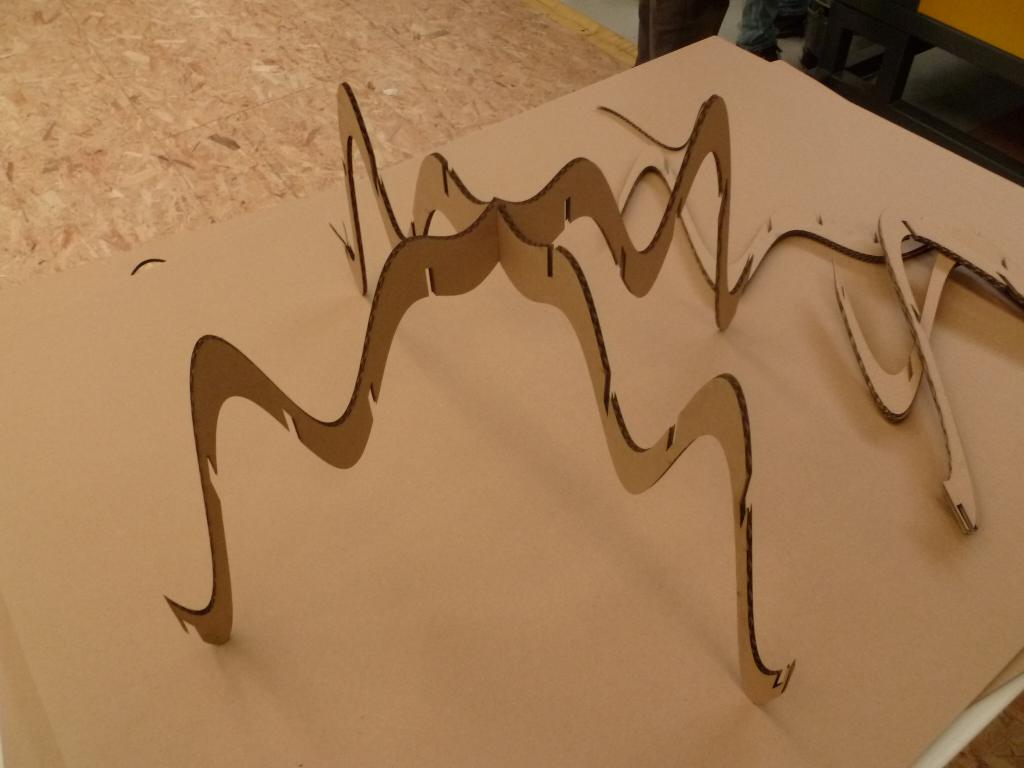
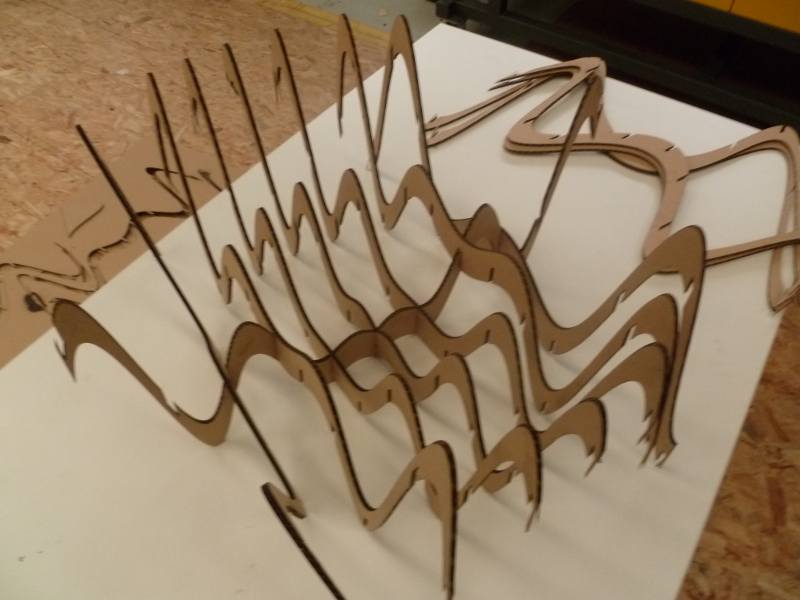
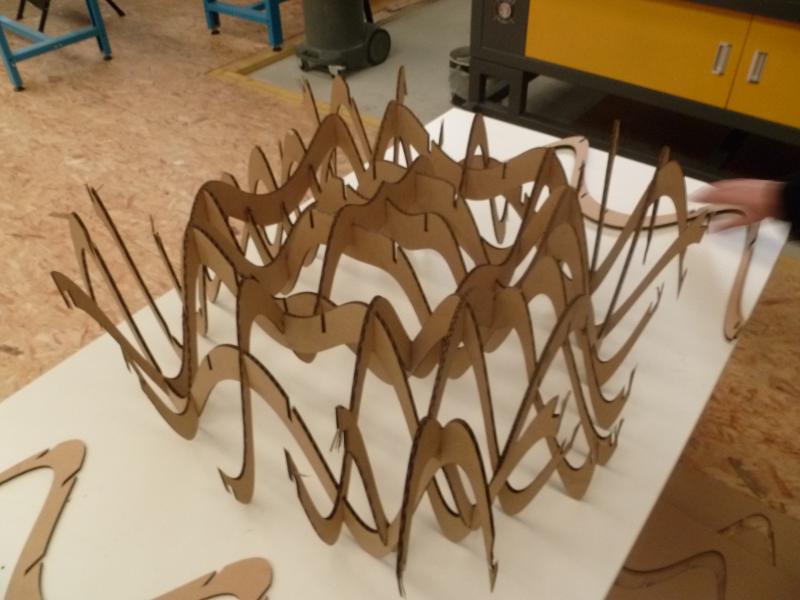 The slots could be improved: in very twisted areas, they are beveled, and suddenly do not take too much. (a bit of tape hold the proto).
Finally it looks like a big trouble salad basket.
The slots could be improved: in very twisted areas, they are beveled, and suddenly do not take too much. (a bit of tape hold the proto).
Finally it looks like a big trouble salad basket.
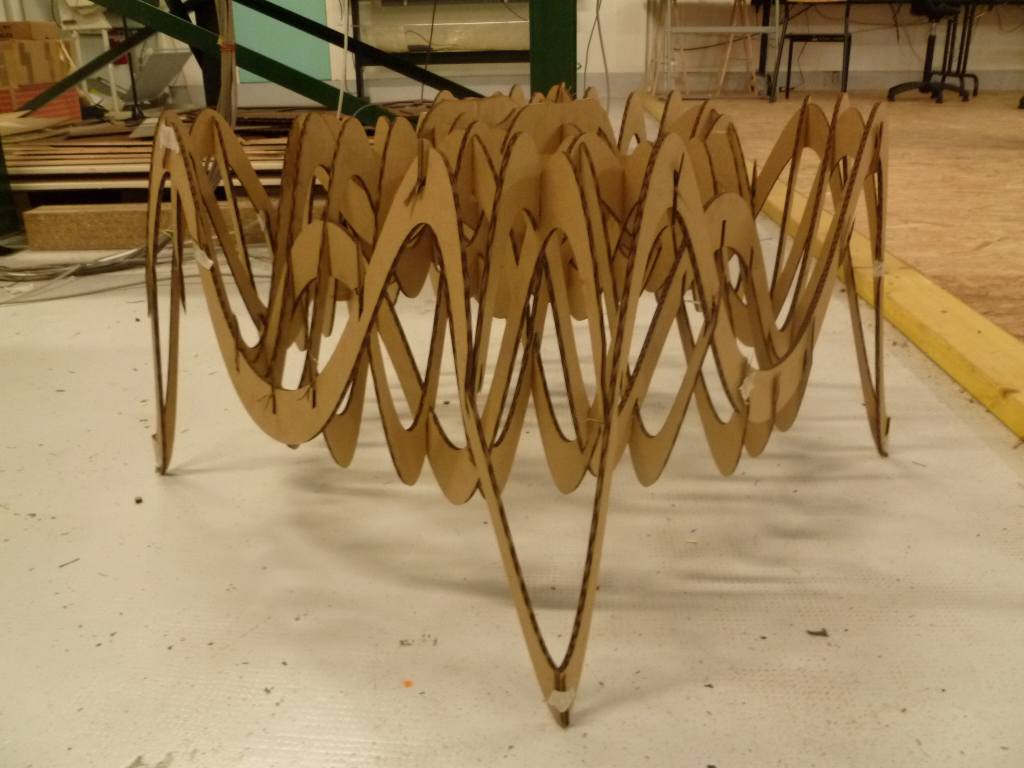
 but in a living, it does well (the glass should be cut in the corners to make the global form less sharp).
but in a living, it does well (the glass should be cut in the corners to make the global form less sharp).

 I discover a functionality (almost) unexpected: the largest wave can store flyers of associations and friends.
In future releases, the equation ripple table could be improved, including:
I discover a functionality (almost) unexpected: the largest wave can store flyers of associations and friends.
In future releases, the equation ripple table could be improved, including:
- optimising nesting
- provide access to the central wavelength from the outside (when the glass is in place) to allow to put objects and increase the antropy.
- increase the number of boards for aesthetic
- extend the notches in critical areas
 I finally managed to get to what I wanted to achieve: parametric parts to achieve an undulating table.
I finally managed to get to what I wanted to achieve: parametric parts to achieve an undulating table.


 Sverchok allows me to manage the equation of deformation of plates that make up the table.
File:VagueTable.generator.sverchok.blend
As often happens in this type of learning, I discovered a posteriori much simpler ways to do what I wanted ...
But in any case, I discovered a very fun new tool that opens new horizons for me in terms of modeling meshes.
Sverchok allows me to manage the equation of deformation of plates that make up the table.
File:VagueTable.generator.sverchok.blend
As often happens in this type of learning, I discovered a posteriori much simpler ways to do what I wanted ...
But in any case, I discovered a very fun new tool that opens new horizons for me in terms of modeling meshes.








